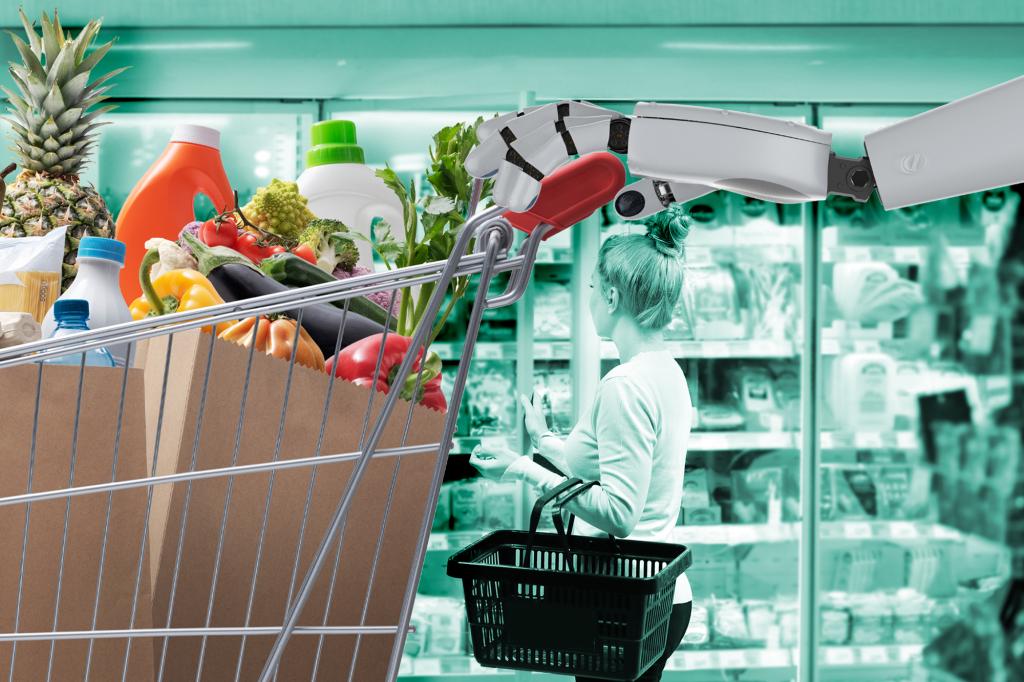Artificial intelligence is increasingly being used in grocery stores to make shopping easier and more cost-effective for consumers. From smart carts that help with budgeting to technology that allows for biometric payment methods, AI is starting to dominate the grocery shopping experience. Grocery stores in the tri-state area have begun rolling out Instacart Caper Carts, which offer features designed to help users save money on their weekly hauls and stay on budget. For example, the carts have automatic discount features and a “spin the wheel” feature that can give shoppers a chance to win money off their bill.
Customers have reported significant savings when using AI-powered grocery carts. By uploading digital coupons and taking advantage of recommended deals, shoppers have been able to save money on their purchases. The carts also provide information on store specials, coupons, and how much shoppers are spending, making it easier to stay on budget. The carts have proven to be popular among consumers, with lines forming to use them at certain locations and shoppers reporting that they are more convenient than traditional shopping carts.
The use of AI in grocery stores is not just about saving money, but also about making the shopping experience more enjoyable. The Caper Carts gamify the shopping experience with features like LED touch screens, sensors, and cameras that can identify, scan, weigh, and calculate the cost of each item in the cart. Other robots, like “Tally,” roam stores to check for missing, misplaced, or mispriced products. Overall, the carts make grocery shopping less laborious and more playful for customers.
In addition to making grocery shopping more convenient, AI is also being used to improve store operations and reduce customer pain points. Supermarkets are planning to increase their AI spending significantly by 2025, with the goal of delivering operational efficiency and new revenue opportunities. Retailers are embedding AI capabilities into store equipment to minimize customer complaints and improve the overall shopping experience. For example, retailers like Sam’s Club are using computer vision and digital technologies to verify payments and streamline the exit process for customers.
AI is not just being used for convenience and operational efficiency in grocery stores, but also for security purposes. Retailers are using predictive analysis AI to monitor data from registers and detect potential theft or fraud. This technology has helped stores identify shoplifters and reduce losses, ultimately keeping prices low for honest customers. By leveraging AI for security purposes, retailers can maintain a safe shopping environment and protect their assets while delivering a seamless shopping experience for customers.


